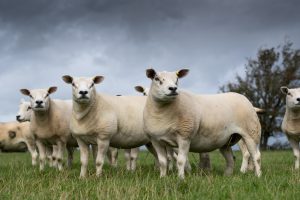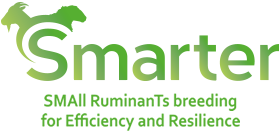
This project has received funding from the European Union’s Horizon 2020 research and innovation programme under grant agreement No 772787.
Practical Selection Tools to Benefit from International Cooperation (WP6) – Updates
by J.M. Astruc, D. Berry
A plenary WP6 meeting was held on 15 December 2020 and the main outcomes were presented at the Wrap Up meeting on 14 January 2021.
As the prerequisites for setting up international evaluation are mainly achieved, the across-country evaluation will be implemented in 2021. Pedigree and phenotypic data (and in some cases genomic data) have been pooled together for the three case-studies: in meat sheep (Charollais, Vendéens, Texel, Suffolk from Ireland, the UK and France), in dairy sheep (Spanish Latxa and French Manech) and in dairy goats (Alpine and Saanen from France, Canada, Switzerland and Italy). The level of connectedness among countries have been assessed. Each case-study will run BLUP and SSGBLUP animal model from, using a multi-trait evaluation (each country being considered as a different trait) based on phenotypes, on at least one efficiency–related trait and one resilience-related trait. Variance components and genetic correlations across country will be estimated, EBVs produced. Technical solutions and issues related to genetic evaluation and data edition (exchanged files, ID problems) will be documented for future possible routine evaluation.
The research on allele frequency across country x breeds in sheep was presented with updated populations (10 meat sheep populations from 4 countries and 8 dairy sheep populations from 2 countries). Countries that would like to pool their populations can do it by sending their genomic data to Aine O’Brien (Teagasc) as soon as possible.
Meanwhile, a survey on opportunities and risks of multi-country evaluation was conducted in SMARTER partners. An interesting list of arguments / opinions / comments were collected on genetic issues, exchanges and collaborative issues, externalities, financial aspect. Besides a lot of opportunities, it is important to deal with one potential risk for the countries, which is the loss of independence on evaluation if international evaluation is run by a third party (eg. international evaluation centre); maintaining national research groups seems needed and preferred. Such survey will be proposed to farmers and organisations of SMARTER countries, as well as to the stakeholders of the platform. The results will be useful to write the business and operation model for routine international evaluation in the future.
Finally, the tool developed by Teagasc to quantify the benefit of international sharing of germplasm (through the Ireland and New Zealand case-study) was presented and proposed to be used in other case studies within SMARTER (see the dedicated article in this Newsletter).

copyright TEAGASC

copyright Texel Society

